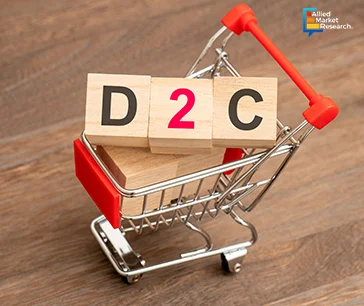Table Of Contents
- Huge Investments in Private Label and D2C Retail Reshaping the Different Dimensions of the Domain
- Increased Adoption of Digital Technologies and E-Commerce Platforms Redefining the Sector
- Upcycled Consumer Goods: A Trend to Achieve the Goal of Environmental Sustainability
- Rising Consumer Demand for Eco-Friendly Products Transforming the Domain
- Personalization and Customization Opening New Avenues of Growth in the Landscape
- A Period of Fascinating Growth and Stability for the Consumer Goods Sector

Roshan Deshmukh

Koyel Ghosh
Analyzing the Trends and Developments Positively Impacting the Consumer Goods Domain in Q3 2024

The exponential rise in the global population and the rapid pace of urbanization and industrialization around the world have significantly broadened the scope of the consumer goods domain. Along with this, the changing lifestyle of people living in metropolitan cities and industrial towns has contributed to the growth of the sector. The increasing shift toward environmental sustainability and the advent of e-commerce has opened new avenues of growth in the landscape. Apart from this, certain trends and advancements witnessed in the third quarter of 2024 have strengthened the position of the field. Allied Market Research has compiled a detailed study that highlights the impact of these developments on the sector.
Huge Investments in Private Label and D2C Retail Reshaping the Different Dimensions of the Domain
Private label goods are products manufactured by one company but sold under the brand name of another company. The marketing strategy is generally used by businesses to offer exclusive items to their customers and undercut competitive pricing. D2C retailing, on the other hand, refers to a model wherein a company sells its products directly to the consumer without the involvement of any intermediary. The growing proportion of price-conscious buyers has been one of the biggest factors behind the rising popularity of private labels. Furthermore, the increasing penetration of internet services and a surge in consumer tech awareness have shifted the preference toward the D2C marketing model.

Increased Adoption of Digital Technologies and E-Commerce Platforms Redefining the Sector
The launch of 5G services in several developed and developing countries has exponentially increased the penetration of the Internet. As a result, to market their products easily and connect with a wider customer base, many retail brands are launching e-commerce websites. The growing focus on enhancing online shopping experiences has completely transformed the domain of consumer goods. Even in the spheres of tourism, entertainment, and education, leading service providers are launching online applications to engage with their consumers directly. The online coaching industry is expected to gather a revenue of $11.7 billion by 2032 due to these trends. The flexibility in scheduling, convenience, and easy accessibility offered by these digital fitness and education applications have increased their popularity among people of different age groups.

Upcycled Consumer Goods: A Trend to Achieve the Goal of Environmental Sustainability
In the past few decades, the consumer goods sector has been criticized for its huge contribution to plastic pollution and environmental degradation. At the same time, several countries across the globe have signed different multinational agreements to curb carbon emissions to limit the pace of climate change. These developments compelled many private companies in the retail sector to adopt sustainable practices while manufacturing their products. From the buyers’ perspective, people have become more environmentally conscious and opt for products that have minimal impact on their carbon footprint. To address these demands, lifestyle and cosmetics brands have started using upcycled products as raw materials to produce high-end products. The upcycled denim products landscape is expected to surge ahead at a CAGR of 7.9% from 2022 to 2031 on account of these trends in the domain.
Rising Consumer Demand for Eco-Friendly Products Transforming the Domain
A major trend witnessed in the retail sector is the increasing adoption of sustainable packaging solutions by businesses to reduce the carbon footprint of their operations. Along with this, the growing demand for eco-friendly products has led to companies making their supply chains more transparent so as to increase the trust of their customers in the brand. The shift from plastic to wooden toys is one such example of the trend. The rising awareness regarding the hazards of toxic chemicals and materials used in conventional toys is expected to increase the revenue share of the sustainable toys industry to $59,643.9 million by 2030. In the third quarter of 2024, many personal care brands, sports apparel companies, and retail goods manufacturers have started producing eco-friendly goods to cater to the demands of their customer base.

Personalization and Customization Opening New Avenues of Growth in the Landscape
Personalization and customization in the retail sector primarily refers to using personal data and preferences to provide tailored goods and services to the consumer. Many leading e-commerce websites and platforms have started adopting advanced technologies such as AI, machine learning, and big data analytics to offer personalized browsing and shopping experiences to the customer. The main purpose of providing customized services is to make the shopper feel unique and emotionally connected to the brand. Thus, personalization and customization have emerged as a reliable strategy to increase brand loyalty in the long run. For this, retail brands collect various types of data from the customer including his/her shopping patterns, order history, shopping preferences, etc., and showcase their new products and services accordingly.
A Period of Fascinating Growth and Stability for the Consumer Goods Sector
The shift toward environmental sustainability and the launch of innovative eco-friendly products have been one of the most stunning developments in the consumer goods landscape in Q3 2024. Furthermore, the heavy investments in private labels and the D2C model of marketing by leading brands helped the companies establish their foothold in the sector. Finally, the rise of e-commerce platforms and the adoption of personalization and customization strategies to increase brand loyalty have created favorable conditions for their growth. All in all, as per the AMR study, the consumer goods domain experienced huge growth in the third quarter of 2024 and is predicted to continue flourishing in the future.
Stay in touch with our analysts for the latest developments and advancements in the consumer goods sector!

